Exploring The Top 7 Juvederm Filler Types
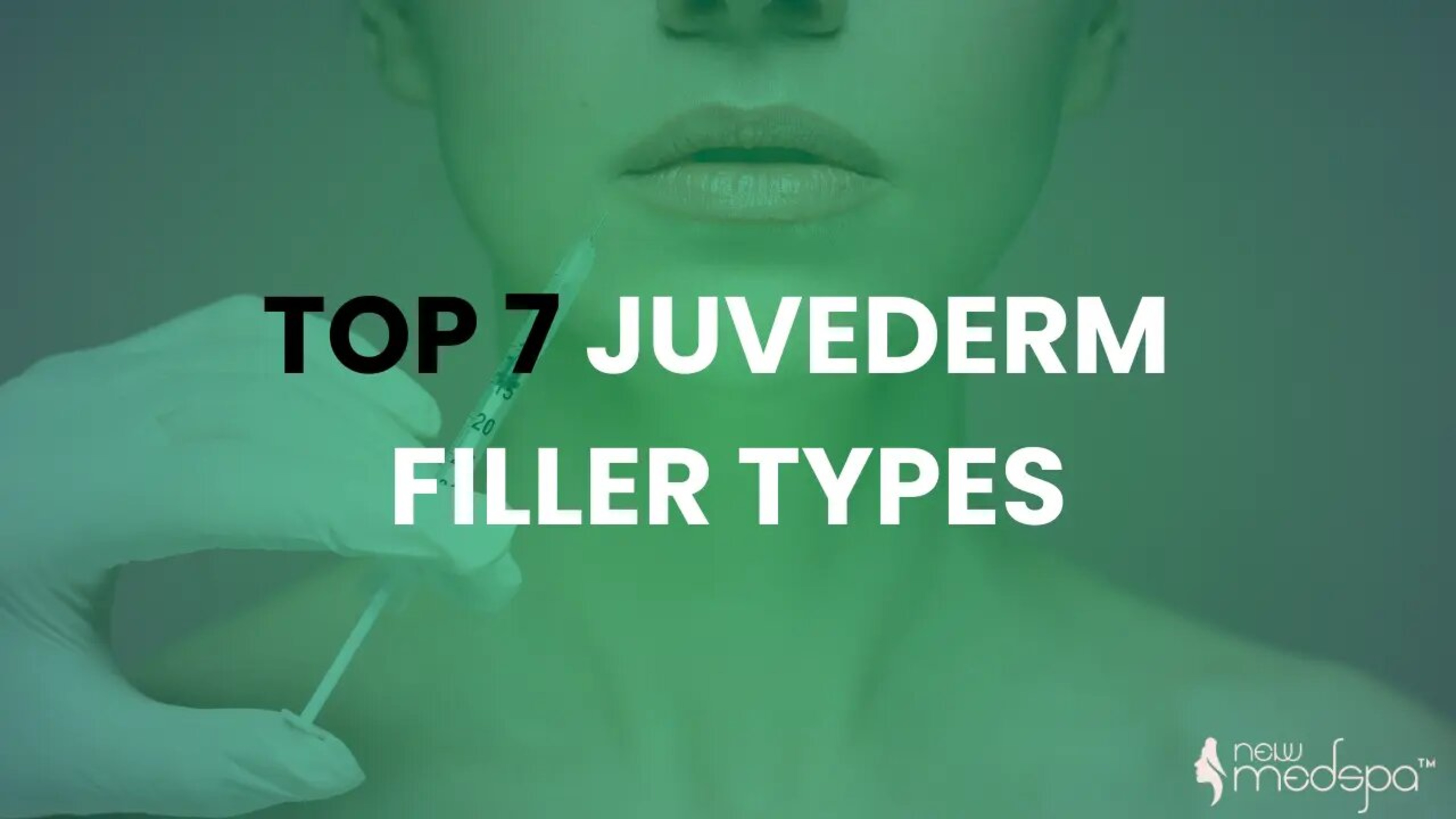
Juvederm filler types are well-known names in the field of cosmetic treatments for lack of other choices. It can smooth out wrinkles and folds, add warmth to the skin and strengthen your cheekbones. Many people think of Juvederm first when they think about turning back time. Only they may not know that Juvederm is a composite filler. Different fillers for every different job. In this blog we will discuss all the characteristics of each type of Juvederm filler and its benefits. Formally known as Juvederm Ultra and it is, perhaps, the most popular of all Juvederm filler types. Here is The Top 7 Famous Juvederm Filler Types If you want more volume in your cheeks Juvederm Voluma XC is the answer for you. Different from the others in the Juvederm filler line this purposely formulated version takes care of other needs. It has long-lasting results, usually lasting up to two years, making it popular with those who want a sculpted, youthful look. 2. Juvederm Ultra 3: for Medium to Deep Wrinkles Juvederm Ultra 3 is indicated for the correction of moderate to deep wrinkles and folds. Grover’s syndrome, one of the Juvederm injections, not the sun, only provides exceptional volume and moisture. It is popular for softening deep nose-to-mouth lines and lower lines at the corners of the mouth. Most noticeable of all the body it gives a naturally refined look. Furthermore, it retains an ability to support you on a longer term basis. 3. Juvederm Volbella XC: Best Choice for You For people who want to upscale their lips in a more subdued fashion, Juvederm Volbella XC provides the right answer. Unlike other Juvederm filler types, which concentrate on dramatically changing volume, this filler is designed to give a natural and hydrated appearance. It’s also great for treating perioral lines (the small wrinkles around your mouth) and can last up to one year. 4. Juvéderm Dermal Fillers can be used in a variety of ways Juvéderm Dermal Fillers include a selection of fillers specifically designed to address different facial concerns. This collection has an option for everything from lip augmentation to ridding oneself of wrinkles and restoring fullness. Smooths out dynamic wrinkles,and is also responsible for giving volume back to the face, restored motion Individuals with smile lines, marionette lines, or similar dynamic wrinkle problems. 5. Juvederm Vollure: For Smile Lines and Wrinkles As one of the best Juvederm filler types to use when treating moderate to substantial wrinkles anywhere on your face, especially inside one’s nasal labial fold or corner of the mouth line below it, Juvederm Vollure offers users an inherently balanced form that sustains both flexibility and durability at the same time That last up to 18-month s, and with proper support from the proper specialist, this form will allow for natural facial expressions to remain intact. 6. Juvederm Ultra XC: Away for Lip Augmentation Choosing Juvederm Ultra XC now allows women to transform thin, lack-lustre lips into plump and full pout worthy ones that are all the rage. The filler was created specifically for the lips, increasing volume yet still allowing a natural feel. 7. Juvederm Volux: Ideal for Contouring the Jawlines Juvederm Volux with Lidocaine’s official purpose is to fill the jawline. As a result, this filler has become the most prevalent among all fillers out there, because no one wants a that is soft and flabby instead of smooth chiseled perfection pipe dream look in reality in practice. It all depends on how you take care of this perfect aesthetic. You can sustain your new look for as long as two years. What is Juvederm? Juvederm is a brand of dermal fillers that features hyaluronic acid (HA). It helps to generate skin moisture and volume because it is a natural part of the body. It Is right for you if you want to sculpt your cheekbones, fill out those nasolabial folds and smooth them away or have more luscious lips.The formulation of Juvederm meets and targets specific areas in order to ensure the best possible results. The Benefits of Choosing Juvederm Fillers A natural look: Juvederm Fillers are created to blend and mold smoothly to your natural features as possible. modular design 180 Short Downtime: Most treatments do not require extensive or any recovery time. You will be able to resume your normal routine right after getting treated. Tt Customized treatments: We have a type of Juvederm filler to suit treatment preferences lightly or firmly, depending on what effect you’re after. Long-Lasting Results: Depending on the type of filler used, results can last from 6-12 months to two years or more. Choose the Right Juvederm Filler Types See a Professional: A trained injector can take stock of your facial anatomy and suggest the best Juvederm product for your concerns. According to research and experience Dr. J. M D is the best injector for juvederm filler types. He is board certified and his experience is almost 25+ years in the field of medical. Identify Your Concerns: Decide which parts of your face you want to work on be it lines, lip augmentation, or just filling out the volume. Think About Longevity: You can choose a different Juvederm filler types, if your need is for a level of improvement that is greater. As far as this question is concerned, the length of time results from surgery to correct physical defects will last may depend on who performs it. Final Thoughts By knowing the different Juvederm fillers, one can make informed decisions that affect their appearance. When it comes to perfecting your whole, not just liposuction alone; you can have it all with Juvederm. Juvederm offers many filler types, with all filler types. Therefore, it is critical to consult a professional injector.
6 Common Types of Lip Surgery
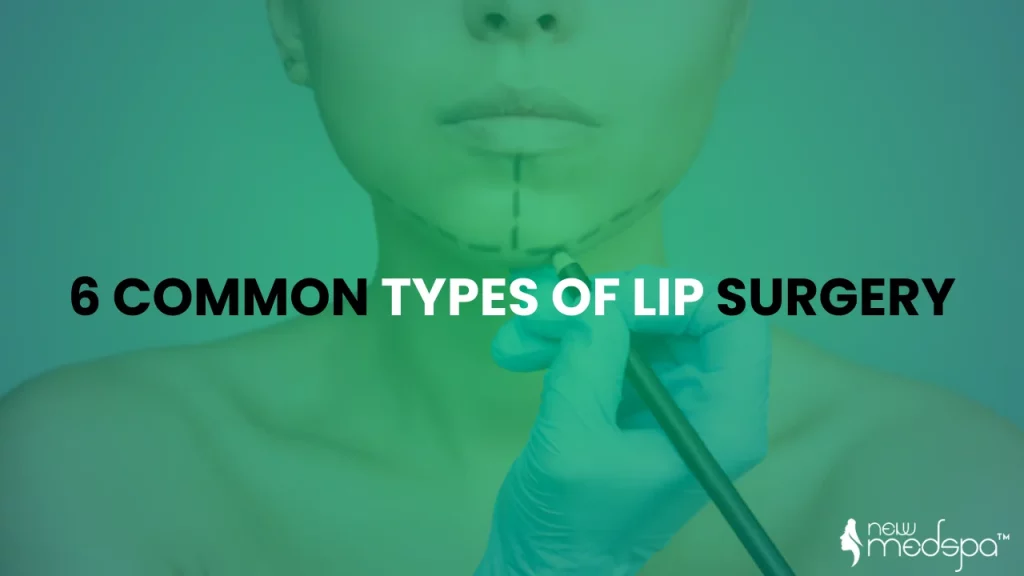
Types of Lip surgery in different forms have become a growing trend among most people who are in the process of trying to alter the shape, size, and aspect of their lips. Main purposes for alteration include full lips, mouth corners, and a variety of other problems. The range ranges from the surgical kind, where loads of fillers are used. In this guide, we’ll be looking at different types of lip surgery procedures, pros and cons, and the results you can expect. There are different types of lip surgery, with different procedures, benefits, and disadvantages to consider. Types of Lip Surgery: So, there are 6 common types of lip surgery. 1. About Lip Augmentation: Adding Volume and Contour Definition: Lip augmentation is a cosmetic procedure that aims to enhance the size, shape, or definition of the lips. It is applied if one wants to have fuller lips or a more defined shape. This is done by using dermal fillers, fat transfer, or implants and results heavily depend on the level of treatment received. Procedure: A lip augmentation procedure involves adding volume to the lips, which makes the lips look fuller and more plumper. How to do this? Two ways: Advantages Disadvantages 2. Lip Lift: For a Youthful and Defined Appearance Definition: A lip lift is a surgical procedure that reduces the distance between the upper lip and the nose, thereby improving the natural shape and contour of the lips. The purpose of all this is to make the upper lip look younger by exposing more of the upper teeth and creating a more defined smile. It has good popularity among many who want a youthful appearance. Procedure: A lip lift removes a small strip of skin under the nose, reducing the distance between the upper lip and nose. The surgery lifts the upper lip, exposing more of the upper teeth, which gives a more youthful appearance. Advantages Disadvantages: 3. Cheiloplasty: Reshaping and Repairing the Lips Definition Cheiloplasty is a type of surgery for the reconstruction of the lips; this is the most common types of lip surgery. This includes cosmetic surgery which aesthetically improves the appearance of the lip, to reconstructive surgery which deals with defects or injuries such as cleft lips. It is performed mainly for correction of asymmetry or for defects/trauma or congenital conditions. Procedure: Cheiloplasty. A surgical procedure for lip shape remodeling or repairing. Such a procedure can be performed for both aesthetic (like correcting asymmetry) and reconstructive purposes (such as repairing a cleft lip). Benefits Drawbacks 4. Cleft lip surgery: Restoration of function and form Definition This is a reconstructive surgery done on babies born with a cleft lip. Cleft lip is a birth defect in which a baby is born with a split or opening in the upper lip. The surgery can close the gap, restore the natural appearance of the lip, and even improve function, such as feeding and speech. Procedure: The children are often born with a cleft lip, a gap in the upper lip. The surgeon moves the lip tissue to cover the gap and secures it in place. This can be done a few different times as the child matures to further create definition of the lip and to correct any additional discrepancies. Benefits: Disadvantages: 5. Reductive Lip Surgery: Reduction of Full Lips Definition: Red Lip surgery Red lip surgery is done for the reduction of full lips or bulging lips. Therefore, people have lips that are over-inflated and too large for their features. The doctor will remove tissue from the upper and lower lips to create a perfect appearance. Procedure: Overstuffed or protruding lips are decreased through this process. This technique includes removing some tissue of the lip to give a more balanced and harmonious appearance. That is a more complex process because it means being very precise, otherwise you end up with over-reduction. Advantages: Disadvantages: 6. 56Lip Revision Surgery: Fixing the Mistakes of Other Surgeries Definition The revision surgery is a procedure intended to correct one or more imperfections arising from a prior lip surgery. The surgical procedure corrects issues, such as scarring, asymmetry, or over-correction, and it is generally performed after the primary cosmetic surgeries, where the outcome desired was not entirely achieved. Procedure: Lip revision surgery reorganizes any imperfections from lip surgery, including asymmetry of the lip, lip scarring, and overcorrection of the lip. For the natural look to be given, the surgeon has the task to meticulously modify lip tissue. Benefits disadvantages What to Know: Which types of Lip Surgery Is Suitable for You? Definition All the types of lip surgery- augmentation, reduction and reconstruction- are big deals. Considerations and Reminders before the Surgery So, here are the things you should get in order- all types of surgery before you head in for your lip surgery: What do we want? Do we want a pouty shape? More functional repair? Know what that is? Recovery: few of them take quite some time to recover for implants and lip raises but for fillers and a smirk surgery, will not be a for long drawn. Cost: there are 6 types of lip surgery and all have different scale medical beauty is far more affordable. How Long: Remember how long do you want the correction, if you want something that lasts till infinity then surgery is your thing. just any well so I guess how long would you want the correction. Moreover, the non-surgical procedures are experimental. Conclusion Types of Lip surgery can be done to improve the fullness, It can also enhance the fullness, shape, and symmetry of your lips. Perhaps you’re suddenly hearing the term thrown around a lot. It ranges from minimal touch-ups to complete transformation. From lip augmentation with dermal fillers or fat grafting, to permanent lip implants, there is a solution for everyone.
What is Vampire Breast Lift? Breast Enhancement Guide
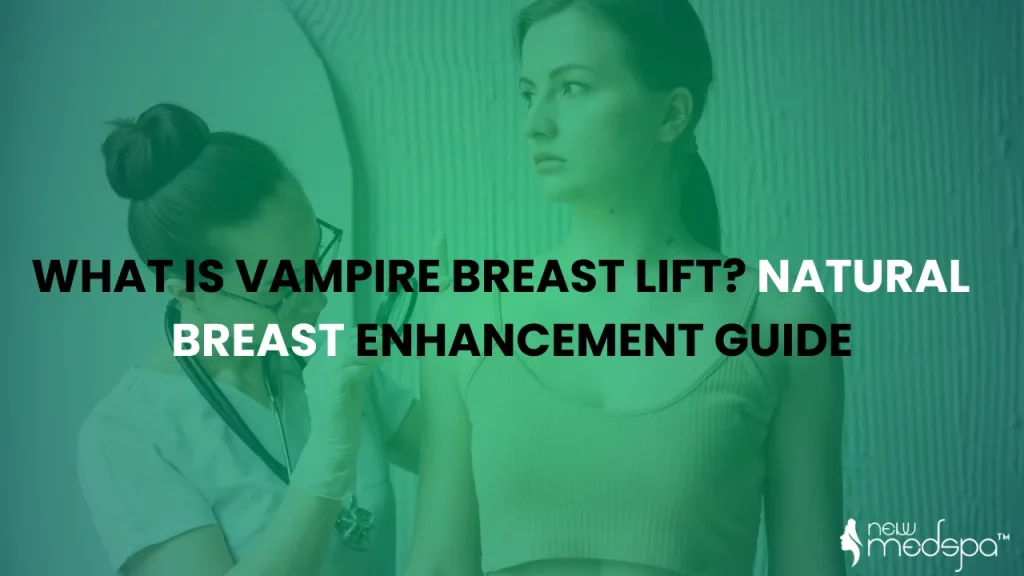
What is vampire breast lift? especially with non-surgical breast augmentation. Well, more and more people are starting to wonder about that. Vampire Breast Lift or VBL, is a non-surgical aesthetic procedure, where inched (Platelet-Rich Plasma) of the patient blood is used for breast shaping, contouring, and overall enhancement. It injects PRP directly into breast tissue to stimulate collagen production, improve skin tone and naturally plump and lift breasts, without implants or surgery. What is Vampire Breast Lift? So what is vampire breast lift? vampire breast lift exactly is It has to do with injecting your own platelets for further collagen growth on breast tissues. Here the skin within the breast is tightened down and you spectate the contour in the breast form and the substantial uplift of saggy tatas. How does vampire breast lift Works: Extraction of PRP: In the first step, blood is drawn from the arm of the patient. Then, the blood is placed in a centrifuge to separate out the platelet-rich plasma (PRP) from the blood. PRP Injection: The prepared PRP is injected into the breast tissue at specific locations to stimulate collagen production, increase skin elasticity, and improve breast volume and contour. Natural Results: Growth factors in PRP promote tissue regeneration, creating tighter, youthful perky breasts. Surgery, implants or fillers are not required. Vampire breast lift procedure If you want to learn more about what is vampire breast lift, the first thing that you need to do is take the procedure itself, break it down. Breast Vampire lift benefits Now that we know what is vampire breast lift is, let’s look at the benefits. Risks and Side Effects As with any type of cosmetic procedure, there are a few potential side effects or risks associated most mild and temporary, though: Who Should Not Go For Vampire Breast Lift? Methods to Have a Breast Lift 1. Exercise Exercises targeting the chest will develop our under-breast tissues (the pectorals) and make for a natural lift. 2. Healthy Weight Avoid rapid gains or losses in weight to prevent skin stretching or sagging. 3. Skin Care Moisturizers — or products containing retinoids or collagen boosters — to help keep skin firm and elastic. 4. Sun Exposure Avoidance Use sunscreen often enough that you don’t suffer damage and sagging to the rays. 5. Massage How To Permanently Get A Breast Lift Massage the breast area. This may enhance blood circulation and skin elasticity. 6. Hydration Have enough to drink and use emollients to retain skin elasticity. Frequently asked questions What is Vampire Breast Lift? A Vampire Breast Lift is a non-surgical cosmetic procedure that uses platelet-rich plasma (PRP) from your own blood to rejuvenate and enhance the shape, contour, and appearance of the breasts. Is the Vampire Breast Lift permanent? No, the results of the Vampire Breast Lift are temporary and typically last between 6 to 12 months. Touch-up treatments are required to maintain results. Will the Vampire Breast Lift hurt? The process includes injections, so there’s normally a pinch or just a slight discomfort during the process. Topical creams of anesthetics may be used to reduce discomfort in the process. How long does it take? The treatment for the Vampire Breast Lift is usually about 30 minutes to one hour depending on which areas are being treated. conclusion Vampire Breast Lift One of the more popular options when it comes to women wanting their breasts to look larger and enhanced without the need for the surgical procedure. If you have been asking what is vampire breast lift, we hope this article answers your question. If you’re hoping to give your breasts a little pick-me-up, it’s absolutely a great option, because it’s a non-invasive procedure with a short recovery time.
Trapezius Botox: Benefits, Uses, and What to Expect

Trapezius Botox it’s not just about getting rid of wrinkles anymore. It’s a whole new way to treat muscle tension and sculpt the neck and shoulders. Imagine sitting at your desk, your shoulders creeping up toward your ears, your neck stiffening as the hours go by. Now imagine an application of the solution that does not only ease that tension but also defines and reshapes the very muscles causing it. Trapezius Botox is a treatment turning heads not only because it can treat muscle pain but, more importantly, because of the transformative effects on your neck and shoulders. What is Trapezius botox? Trapezius Botox is a procedure where botulinum toxin, which is more popularly known as Botox, is injected into the trapezius muscles, located at the back and neck region. The trapezius muscles facilitate the following movements: shrugging the shoulders, as well as holding the neck and upper back. The main purpose of Trapezius Botox is to relax and temporarily paralyze the muscles being targeted. The Science Behind Trapezius Botox: Much More Than a Refreshing Treatment Trapezius Botox works similarly to the better-known role Botox has in facial treatments. Injected into the trapezius muscles, Botox blocks acetylcholine, a neurotransmitter that prompts muscle contractions. By paralyzing those muscles temporarily, Botox reduces tension, alleviating pain and discomfort from the tight, overworked muscles that often plague the upper back and neck. Recent studies suggest that Botox is a medicine not only to heal tension headaches or spasms, but also with the ability to provide long-lasting relief from muscle pain in terms of overall musculature, thereby healing the system in the body. It can prove to be much helpful for someone who has developed cervical dystonia and has strong muscle spasms in the neck region that results in severe discomfort and immobility. Trapezius Treatment: What to Expect 1. Consultation The muscle tension, goals, and medical history will be evaluated. Treatment plan and risks will be discussed. 2. Preparation The treatment area will be cleaned; numbing cream may be applied. 3. Injection Botox is injected into the trapezius muscles with a fine needle. Procedure will take 10-15 minutes with several injections depending on the area. 4. Post-Treatment Avoid rubbing the area; resume normal activities immediately. No strenuous exercise for 24-48 hours. 5. Results Noticeable effects will be felt within 3-7 days with full results in 1-2 weeks. Results last 3-6 months before needing a touch-up. The Evolving Procedure: What’s Changed? Imagine Botox as precise as a laser, guided by the latest technology, and amplified by other therapies for even better results. That is how Trapezius Botox has evolved. Benefits of Trapezius Botox: Beyond Traditional Uses Side Effect Or Complication Like any cosmetic or medical procedure, there are some inherent risks and potential side effects when it comes to Trapezius Botox. Being generally safe and effective, one would still need to be aware of the possible bumps along the road. Here’s what you need to know: Perfect Fit for Trapezius Botox Trapezius Botox is a useful procedure for: Sufferers of Chronic Neck or Shoulder Pain. Muscle tension and pains from chronic illnesses, such as fibromyalgia or cervical dystonia, will be released through Botox, eliminating their discomforts. Long desk sitting Poor posture can cause you some neck strain with slouching or staring at screens all day (hello, tech neck!). Botox injections can relax strained muscles, getting your body back to its ideal aligned position. Regularly Engage in Exercise Athletes with repetitive neck and shoulder tightness from intense exercise might find that the Botox injections will relieve overworked muscles and lead them to recovery quicker. Want A More Chiseled Neck And Shoulders For those who want a slimmer, more defined neckline, Botox can relax the trapezius muscles, creating a smoother and more elegant shape without surgery. Deal with Stress-Related Tension: Stress can make your shoulders creep up, causing constant muscle tightness. Botox can help relax those muscles, making you feel more comfortable and less tense. The Bottom Line: The Trapezius Botox treatment changes the game when it comes to chronic neck and shoulder pain or even a want to look slimmer around the neck and shoulder area. Regardless of being a sportsperson, desk jobber, or a person plagued by tension created by stress at work, you can achieve more targeted relief combined with aesthetic appeal through Botox injections. While generally safe and effective, personalized consultation with the right practitioner remains the best approach toward the outcome desired. So, if you want to have smoother muscles and less pain, then Botox is the solution you have been looking for.
Botox for Crow’s Feet
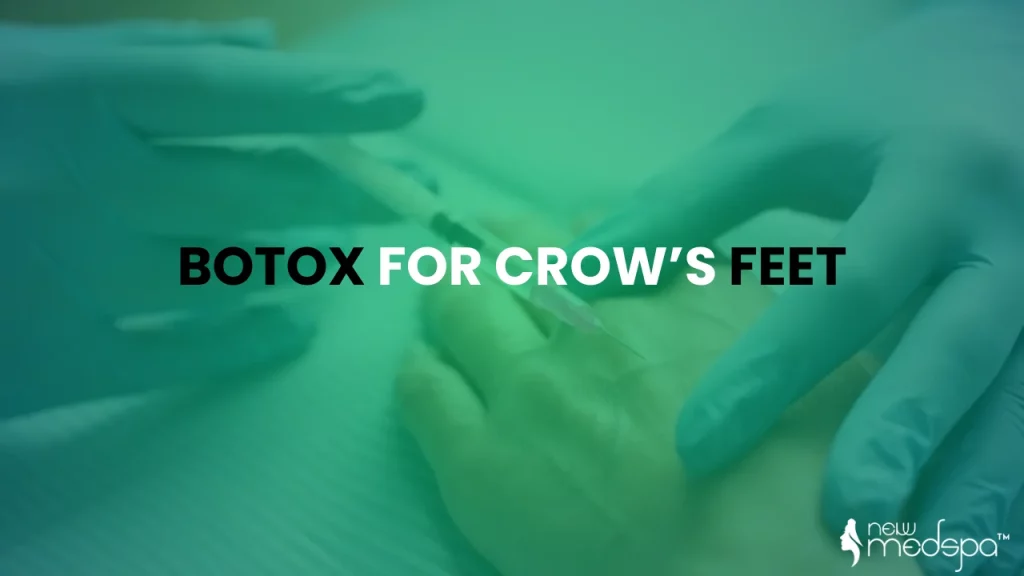
Botox for Crow’s feet are defined as lines found at the outer corners of the eyes as one ages. These lines are most often seen as the first signs of aging skin. Though an inevitable process, the lines are very much hated by the majority of the population who go to great lengths to limit their appearance and attain a youthful look. Most people do not know that Botox is the non-surgical cosmetic procedure international, with 7 million people now undergoing the treatment globally each year. Not just for Hollywood celebs, but a quick, relatively painless way to erase crow’s feet and look years younger. What Are Crow’s Feet? These are the tiny lines (or wrinkles) that appear at the outer corner of the eyes. Crow’s feet are one of the first signs of aging that we notice early on, merely by age itself, but factors such as sun exposure, genetics, and your facial expressions can also keep them from appearing even sooner on your face. When you squint, when you smile and especially when you laugh, you are contracting the muscles that surround the eyes, and doing so repeatedly will create those fine lines around the eyes over time. Botox for Crow’s feet or Wrinkles Botox, a most sought-after beauty treatment, uses the botulinum toxin, a compound that takes priority over wrinkles, especially for this purpose. Botox is also popping up in different preliminary medical indications besides the use of wrinkles and fine lines. It features treatment for migraines and muscle spasticity. It infuses muscles with movement control to smoothen skin with time. Botox for Crow’s feet : These are designed to relax the muscles responsible for crow’s feet, those fine lines that appear around the eyes. It provide a good smooth appearance to the skin and refreshing look to the skin. FDA Approved: Botox has been FDA approved for cosmetic procedures. It’s mostly used as a safe, effective treatment for wrinkles, especially around the eyes, forehead and mouth. Botox for Crow’s feet A trained health care assistant then injects small amounts of Botox into some of the muscles near your eyes with a very fine needle. These injections work on the muscles that cause crow’s feet by temporarily paralyzing these muscles and easing them from contracting. It takes about 10 to 15 minutes or so, and little to no downtime follows. Results begin within a few days, and/or the full effects of treatment generally take about a week. Botox effects for crow’s feet generally takes 3 to 6 months before you need another treatment to keep the skin wrinkle free. Botox for Crow’s Feet Benefits As its injectables boost the individuals with the confidence. By getting smoother skin and less wrinkles. Botox for crow’s feet Risks and Side Effects Most side effects are mild and temporary, but it can be helpful to know what to expect before beginning treatment. Common risks and side effects of Botox for crow’s feet include: The primary cause of crow’s feet include It is the continued action and contraction of the facial muscles at the area where the eye muscles crisscross the mouth, or action of the smile or squint or frown over so many years creates those first crow’s feet. With normal aging comes a degradation of collagen and elastin. Two of these proteins are responsible for the elasticity of your skin, so when they decrease, your skin loses elasticity, resulting in creases. The result is slack sagging skin and droopy elements on the face site. Preventing Crow’s Feet: Simple Tips This is especially true when it comes to Botox. Botox for crow’s feet prevents it from getting more etched in. Final Thoughts Botox for crow’s feet falls within the non-surgical treatments offered to help alleviate wrinkles and fine lines about the face for a more youthful appearance. Results from this non invasive procedure are long lasting and the cost will greatly vary from area-to-area as it depends on the expertise and amount required. By avoiding sun damage, drinking loads of water, and now adding Botox to your beauty regimen, and you’ll always have that smooth, young skin. The Process: Always consult a qualified practitioner when considering any cosmetic treatment as this will give you the best results possible and minimise the risk.
Chin Botox: Your Non-Surgical Secret to a Sculpted Silhouette
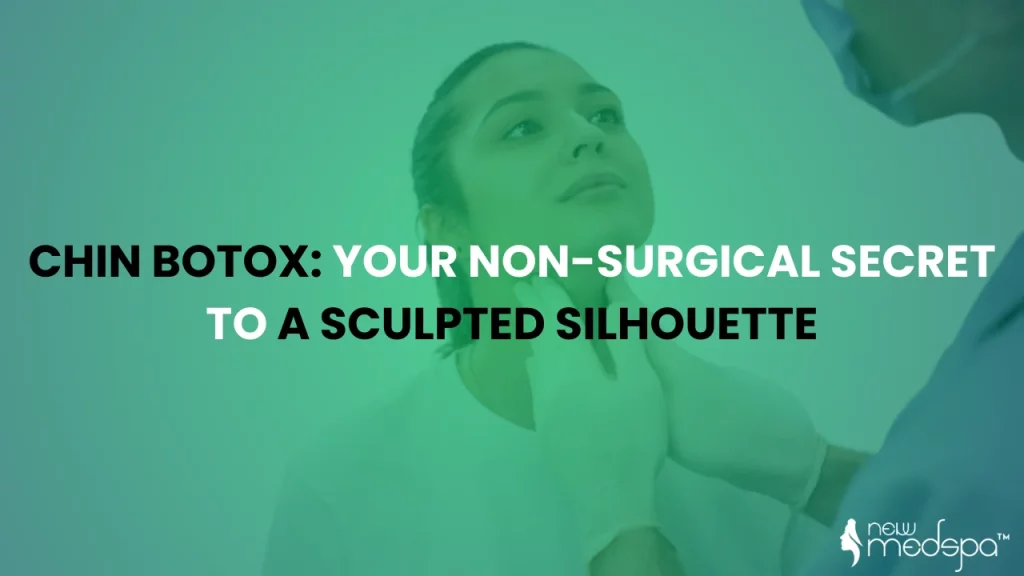
Chin botox can give you, sculpted chin that compliments your beauty with no need for surgery. With its ability to quickly transform your chin into the perfect youthful fixture, chin botox has become the ultimate go-to treatment for those looking to chisel out the perfect profile. Chin Botox, sometimes referred to as “chin augmentation,” “Botox for the chin,” or “lower face Botox,” botox can reduce the appearance of a dimpled chin, and even help with issues like a “gummy” smile. In this article, we will go over everything you need to know about chin Botox, how it works, benefits and what to expect when getting the procedure. Botox: The Craze That’s Been Lasting For Years Originally marketed for wrinkle reduction, Botox has quickly become the darling of functional enhancements of the face. Whether it’s smoothing out lines on the forehead or lifting the brows, Botox has become an essential tool in contouring and revitalizing key areas of the face. Botox has quickly risen to the top of the list when it comes to achieving our perfect look in the name of health and wellness particularly in areas of the body like the chin. What is Chin Botox? Chin Botox is a fast and simple non surgical treatment that targets muscles in the chin area helping to reduce wrinkles, dimples and help define the shape of the chin. Botox temporarily relaxes the muscles that create these imperfections to give an overall more defined, youthful appearance to your chin for a small but stunning lift to your face. This process can aid with concerns in addition to those hoping to improve the presence of wrinkles or lines, here are just some: Why Do You Choose Botox? Results can be adjusted to target certain problem areas for a more customized treatment plan. Botox is another low-risk option for people who don’t want to make a permanent change; it usually can take a temporary effect (about 3-6 months). When performed by a skilled practitioner, Botox offers subtle, natural-effects without a “frozen” look. Botox is a popular choice among many for improving phase looks and feeling good in their skin. Chin Botox Procedure: Step-by-Step The injection sites are cleaned to lower the risk of infection just before each injection. Some practitioners may use a numbing cream to minimize any discomfort during the procedure, but Botox injections typically are not very painful. The Botox is injected using a fine needle into the muscles in the area being treated. More injections are required depending on the treatment area and desired results. It is a quick process, taking about 10-15 minutes. There may be some mild redness, swelling or bruising at the injection site immediately after the injections, however side effects are generally resolved within a few hours. There is no major downtime, and you can resume normal activities immediately. Who Should Avoid Getting Botox? Pregnant or Breast-Feedings ( Safety not established yet during pregnancy or breast-feeding) Botox — Allergic to Botox ( If allergic to any of the components in botulinum toxin or any the ingredients in the injectable do not get this) Diseases Influencing Neurological Capabilities (Some such, for example, ALS or myasthenia gravis, increase the hazards of the other situations.) Do Not Inject In any Area of Skin That Is Infected or Inflamed Severe Anaphylaxis (for individuals with a history of life-threatening allergies) Certain Medications: Some medications work against Botox as well, as they contain muscle relaxants or blood thinners. Health less than 18 or more than 65 (not advisable for minors or older adults without consultation) Best Candidates for Chin Botox Chin Botox enhances aesthetic features at the chin and jawline without quite invasive surgery. One may realize that Chin Botox is a treatment for him or her if: Adverse Effects Botox is considered to be very safe, and side effects are not common when the procedure is done by an expert. However, like all cosmetic procedures, the following potential effects should be considered: Frequently Asked Questions Will Botox Create a Longer Face? Chin Botox doesn’t actually elongate the face, but it does help shape the chin more, which gives the face a more balanced, extended look. By relaxing the muscle that creates chin dimpling, Botox can smooth the chin, which can make the profile appear longer and more harmonious. What Does Chin Botox Do? Botox in the chin mainly helps relax the mentalis muscle, which can smooth chin dimpling or orange peel texture. It will help smooth the chin area, giving a more sculpted and contoured face. Botox can also be useful for a “gummy” smile where the upper lip is lifted too high, by relaxing the chin muscles, creating a more proportionate and balanced appearance to the lower third of the face. Final Thoughts Chin botox It is perfect for those in need of chin contouring as a nonsurgical alternative. It’s a quick, non-invasive way to get a more contoured, cleaner look with little downtime. Whether it’s chin dimpling, a gummy smile or just achieving a more defined chin contour, Botox gives you the look you’re after.
Trap Botox: The Secret to a Smooth Neck and Stress-Free Shoulder
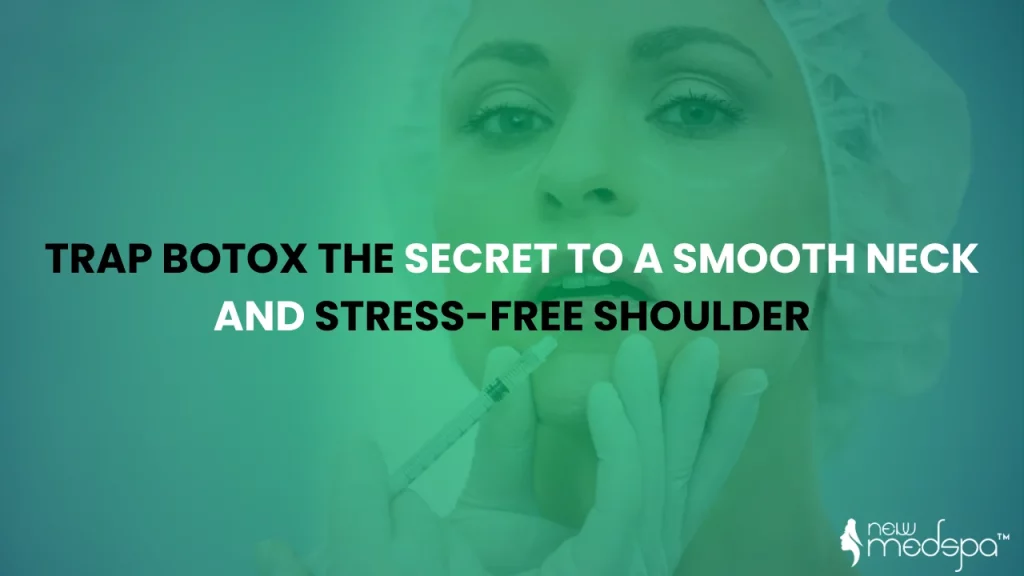
Trap botox is pretty simple, Let’s be real neck and shoulder pain is something all of us are dealing with. Whether it’s from too much time hunched over a screen, stress building up or simply the wear and tear of life, those tight, sore muscles can really do a number on us. But if I told you there’s one, super quick fix that not only helps with the discomfort but can actually give your neck and shoulders a little contour, too. Trap Botox It’s not just for smooth foreheads or crow’s feet it’s the new solution to a sculpted neck and pain-free shoulders. And the best part is It takes only a few minutes, and then you’re living your life with all that tension no longer weighing you down. So, let’s unpack it and why you might just be getting the game-changer you never thought you needed. What the Heck is Trap Botox? Trap Botox is, in fact, relatively easy. Often referred to as the trapezius muscles, or traps, these muscles are located down the backside of your neck to your shoulder area. You can use them to move your head and balance your upper back. Botox serves as a roadblock against nerve signals going into your traps, triggering muscle contractions. It is an uncomplicated and clear method through which you can get some relief and improve your expression overall. Why Do You Choose Trap Botox? You may be thinking, Okay, sounds cool, but why would you need this? Well, here’s why: 1. Sculpt That Neck and Shoulders That does not, in fact apply to everyone of course while some might boast a natural carved neck and angle jaw -but Trap Botox makes everyone’s look tightened-up and sharper while relaxing muscles around the area causing your neck that bully, bulky feel- pretty much just imagine mini contour but no incisions necessary for a contoured effect. 2. So long shoulder scrunchies. If you spend your days close to your laptop or living in a state of permanent stress, you probably know what it feels like to have tense, tight shoulders. It relaxes the trapezius muscles and reduces the ache and tension stemming from stress, bad posture, or overexertion of the muscles. You can think of it as a mini-muscle holiday. 3. Improved Posture Reduces Pain Your posture can be helped by relaxing the trapezius muscles. No more a feeling of dragging yourself along by the shoulders. Through the assistance provided in helping these muscles relax, Trap Botox might help you stand a little taller, walk a little straighter, and feel a lot better all day. More benefits of Trap Botox What’s the Process Like? Now you’re probably asking, What do they do during the procedure? Here’s the scoop: Consultation Time: You will be meeting your practitioner. They will present you with your goals, examine your muscles to determine the right method of injecting the Botox for the results you want. This is quite critical as it provides a fast process. The Good News: The injection itself is pretty quick. The provider will use a small needle to inject Botox directly into your trapezius muscles. It’s not a long time at all, only a few minutes, really. Aftercare: No need to carve out a day on your calendar. Most patients return to their normal routine immediately after the treatment. You may have some slight swelling or bruising at the injection sites, but nothing that will keep you from heading out and about. Just don’t massage the area for a few hours afterward, and you’re set. Who Should Avoid Trap Botox? Disclaimer: Always consult a healthcare provider before trying Trap Botox. Top Candidates for Trap Botox Healthy adults who wish to relieve neck and shoulder pain and muscle tension or simply want a more sculpted look in their neck and shoulders, who are looking for a non-invasive alternative. Always speak with a medical professional to see if it is right for you. Alternatives to Trap Botox 1. Massage Therapy Frequent deep tissue or therapeutic massage may relieve muscle tension in the neck and shoulders and allow the area to be flexible and comfortable. 2. Physical Therapy A customized physical therapy program can help strengthen and stabilize the neck and shoulder muscles, which helps to improve both your posture and your pain. 3. Over-the-Counter Pain Relief Over-the-counter medications such as ibuprofen, topical creams or heat pads can help temporarily alleviate muscle tension and discomfort. Before and After Results Before After Results usually show up in a few days and last 3-6 months based on the individual. The change is small but can have impact on appearance and well-being. Conclusion Trap Botox is about giving you the freedom to feel better and look better without all the difficulty. Whether you do it for the muscle relief or are simply looking to refresh your neck and shoulders, it’s a simple, uncomplicated solution that works. It can also give you look a smooth neck.
What is Body Contouring? A Modern Approach to your ideal shape
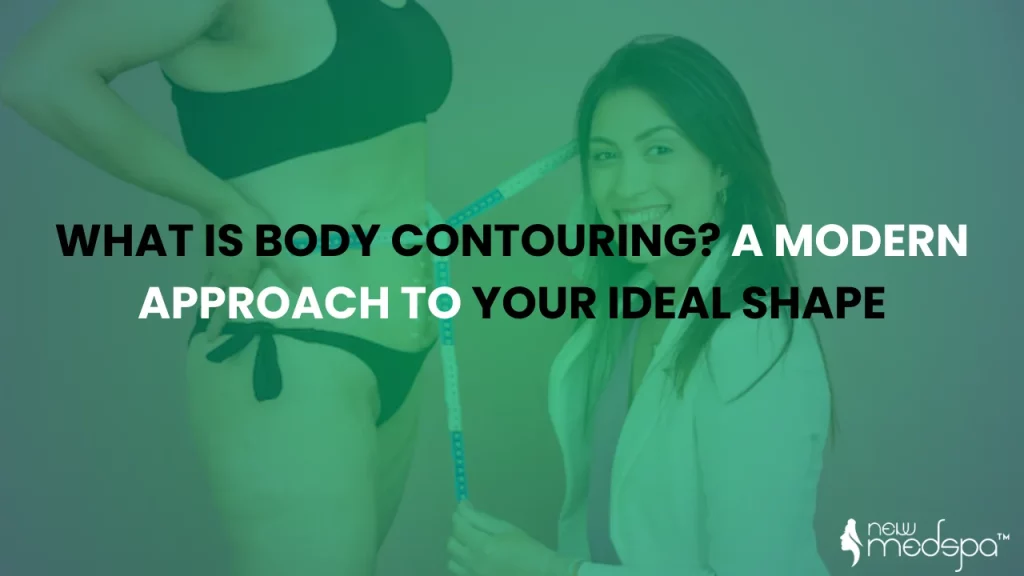
Ever wish for just a little more definition, a firmer tummy, or a sleeker silhouette while looking in the mirror. If you have ever been wondering what is body contouring, then you are at the right place. Body contouring is that magic wand that turns your body into the shape you always wanted, not through extreme diet or exercise. It can be stubborn fat, loose skin, or the refinement of your shape. This is where body contouring steps in and delivers a solution tailor-made for you. In this ultimate guide, we will take you through everything you need to know about what is body contouring from the basics to the latest innovations. So, get ready to meet your new favorite you. What is Body Contouring? This is a non-surgical process that is used to reshape and tone your body with a process termed as body contouring. There are successive treatments for those unwanted fat areas, skin tightening, and molding your body for enhancement. Remove fats that you would always want to do or smoothen your skin with all the modern and effective services brought to the table by body contouring to help you attain the body that you have always dreamed of. Surgical and Aesthetic Body Sculpting Treatments what is body contouring from a surgical angle. Surgical Treatments Non-surgical Treatments: This non-invasive technique is an answer to what is body contouring without going under the knife. Recovery and Aftercare Non Surgical: Recovery time is very small. You’ll just have that tiny redness, swelling or bruising a few days to perhaps one week afterwards, and almost straight away go about your routines again. Surgical: Recovery can be from some days to even weeks after undergoing surgery. Depending on the amount of fats affected, compression wear and some degree of post-operative care may need to be instituted in order to achieve the desired outcome while being as minimal on complications as well. Results Non-Surgical: The outcomes of nonsurgical treatments are modest and take some weeks before these fats start breaking down in your body. Surgical: This is immediate-looking results, although it will take a couple of weeks before the effect totally sets when swelling dissipates. Follow-up After the treatment, you are assigned to follow-up care, making you observe your progress and understanding that everything is healing well. Depending on the treatment, there may be follow-up sessions, in this case, CoolSculpting, which is not surgical. Body contouring is not suitable for: Risks of Body Contouring Body contouring is a relatively safe procedure, but like any other cosmetic treatment, it has some risks. If you know what is body contouring; you should also be aware of its risks. Non-Invasive: Swelling or bruising: Very common but temporary. Skin sensitivity: Temporary numbness or sensitivity can occur. Asymmetrical results: Rare, but uneven fat removal or skin tightening can occur. Mild discomfort: Pain or discomfort may be experienced during or after the treatment. Surgical: Infection: Risk associated with any surgery. Scarring: Any surgical procedure leaves scars. Blood clots: A rare but serious risk. Anesthesia risks: Reactions to anesthesia can occur. Delayed healing: Complications in healing or results. Frequently Asked Questions What is the Difference between Surgical and nonsurgical body contouring? Surgical body contouring is the process of removing the excess fat and loose skin by surgical procedures such as liposuction or tummy tuck. In contrast, non-surgical, for example, CoolSculpting or laser, destroy the fat but with less down time and risk. Is body contouring permanent? The results from surgical techniques will take longer, but they must remain healthy to maintain the effects. Some non-surgical treatments require follow-up sessions for continued effects. Who is a good candidate for body contouring? Ideal candidates are those close to their ideal weight, with areas of stubborn fat or skin laxity. The best candidates tend to be fairly healthy and realistic in their expectations. Does body contouring hurt? Non-surgical treatments can sometimes be uncomfortable, although most never require the need for anesthesia. Surgical treatments have to do with anesthesia and pain after the treatment, which often can be reduced with medication. Conclusion We tell you in this blog what is body contouring. Great for most for reshaping their body. There is not someone who has that ideal figure. Instead, one should consult professionally to know their health status as well as what else should be achieved.
Essential Face Fat Removal Non-Surgical Method
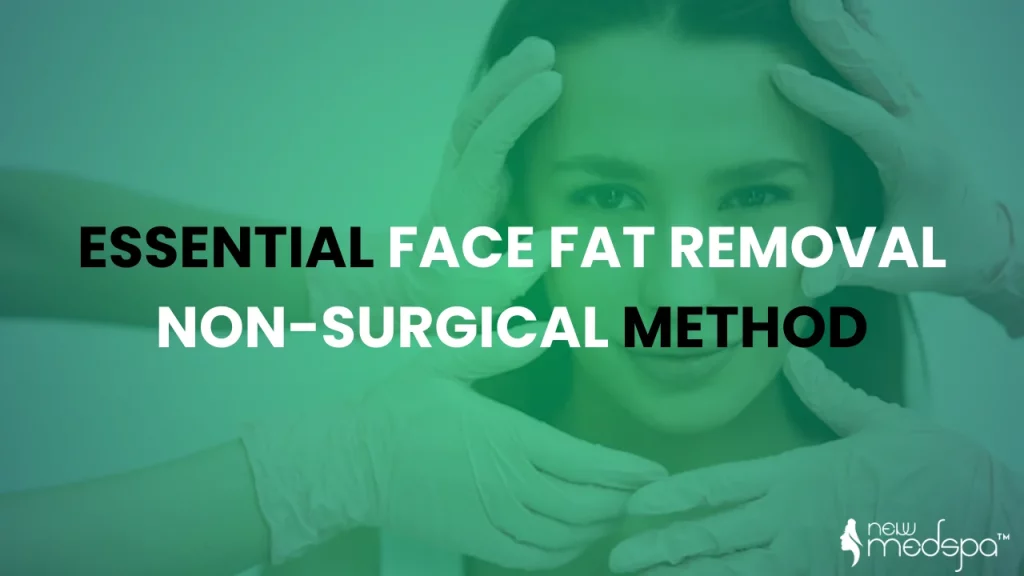
Face fat removal non-surgical is a new technique that reduces excess fat and contours facial features without surgical invasion. It uses freezing, ultrasound, or injections to target and break down fat cells for a more defined and youthful appearance. The cheeks, jawline, and chin are the most common areas for treatment. In today’s world, a well-defined face is synonymous with youthfulness and beauty. However, individuals usually end up complaining about excess facial fats that will give the facial appearance of roundness, less contour, or even appearing aged. Whether it’s around the cheeks, jawline, or under the chin, face fat can really cause insecurities in oneself and one’s overall appearance. Fortunately, there are a number of non-surgical options that provide a safer, faster, and less expensive way of removing facial fats. In this blog, we will talk about some of the most popular face fat removal non-surgical methods and how these can help you achieve a sculpted and younger look. Common Non-Surgical Treatments to Remove Fat in the Face Kybella (Deoxycholic Acid) Kybella is one of the non-invasive injectable face fat removal treatments that attack fat cells under the chin and melt those in a procedure to eliminate a double chin. The treatment is done in sessions, and the removal of the fat is permanent with minimal downtime. Advantages CoolSculpting (Cryolipolysis) CoolSculpting freezes and removes the fat cells through controlled cooling. This targets specific areas, like the chin and jawline, removes that fat naturally over time, with no needles or incisions. Advantages: Radiofrequency (RF) Treatments Radiofrequency is one of the face fat removal non-surgical treatments, such as Thermage, focuses radiofrequency energy on reducing fat, tightens skin areas, and improves parts of the face like cheeks, jowls, and chin. Advantages HIFU HIFU is a treatment using ultrasound energy. It targets the fat and stimulates collagen production thus tightening the skin and contouring the areas like chin and jawline. Benefits Laser Lipolysis Laser lipolysis is a procedure that melts the fat by the energy of a laser and tightens the skin. This is good for smaller areas like the chin or jawline. Benefits Maintaining Results after Face Fat Removal Non-Surgical Preservation Treatments Cryolipolysis or CoolSculpting: Follow-up every 6 to 12 months. Ultrasound Fat Cavitation: every 3 to 6 months Radiofrequency (RF) Therapy: every 6 to 12 months Kybella Injections: usually, no maintenance, but follow-up is needed with weight changes Laser Lipolysis: every 6 to 12 months. Best Candidates for Non-Invasive Face Fat Removal These are patients who have mild to moderate facial fat and do not want to undergo surgery. Non-invasive surgeries are perfect for candidates who do not want the risks and costs that traditional procedures present as well as downtime. Suitable for candidates who have reasonable expectations and seek to minimize the lost time of downtime. A consultation with a cosmetic professional can help determine the best treatment based on your particular goals and needs. Number of Sessions for Face Fat Removal Non-Surgical The number of sessions is calculated considering the type of procedure that has to be carried out for face fat removal non-surgical for the desired results to be seen in the patient. For instance, Kybella is injected in several sessions because it erodes cells slowly to acquire the best results. CoolSculpting is given in one or two sessions for one to notice some changes. Your practitioner will take time to address your personal needs and determine the best plan for you to realize your full potential. Select the Best Non-Invasive Fat Loss Face Procedure The type of treatment applied on your face to remove excessive fat depends on the amount of fat you want to reduce, which areas to target, and the state of your skin. You should seek consultation with a qualified dermatologist or cosmetic practitioner who can assess your needs and recommend the best treatment for your goals. With Kybella, for example, some treatments are really good for localized fat. Others, like CoolSculpting or HIFU, may be better suited to handle larger areas of fat reduction and skin tightening. Before and After Face Fat Removal Non-Surgical Results Before Patients will notice fat around the cheeks, jaw, or even the area below the chin. It causes an over-filled face or even less-defined features. Concerns that a patient might have could include a double chin, sagging skin, or even round cheeks that cause self-esteem issues. There is no visible scarring or prolonged recovery period. After treatment After face fat removal non-surgical treatment people look more chiseled and youthful appearance with improved facial contour, including slimmer jawline, tighter skin, and less fat around the chin as well as cheek regions. The technique applied is expected to show visible results after a few weeks to months. Others, like Kybella, promise permanent removal of fats, while CoolSculpting and RF treatments give more long-term results. Final Thoughts Face fat removal non-surgical is just one of the convenient and effective ways by which one would be able to be more sculptured and youthful and not through invasion. A method such as CoolSculpting, ultrasound cavitation, and injection of Kybella can cause a reduction of facial fat as well as tightened skin and good contour with minor downtime. The benefits clearly are non-invasive, quick recovery, and the absence of a need for anesthetic. Ensure you get a qualified practitioner to assess and recommend a proper course of action before settling for a particular form of treatment. A consultation allows the practitioner to choose the appropriate procedure according to your skin, anatomy, and other specific conditions of your face. Last, the realistic expectations. Although most of these treatments may bring quite considerable improvements, these results may vary and therefore require good habits in lifestyle coupled with perhaps further sessions.
Dermal Fillers for Smile Lines: Everything You Need to Know About
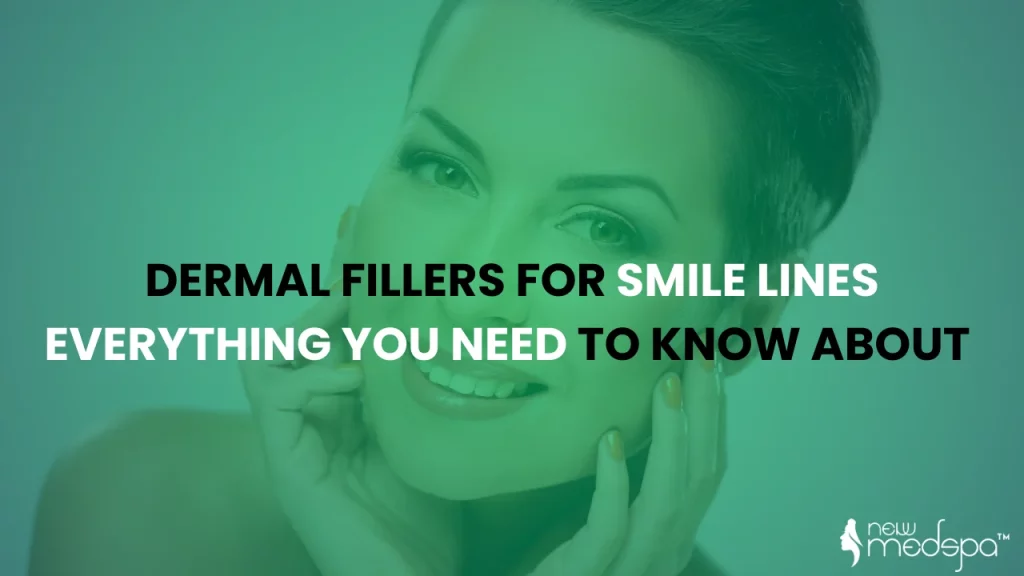
Dermal fillers for smile lines are non-surgical cosmetic treatments such as dermal fillers have lately become very popular for their effective solution in smile lines. smile lines, also called nasolabial folds, are deep lines that make their way along the sides of your nose to the corners of your mouth. They deepen with age by many factors that include skin loss in facial volume and decreases in elasticity of the skin. Smile lines are actually an element of the aging process, but most people seek methods of preventing or at least reducing these lines for that youthful glow. This blog seeks to enlighten you on the way dermal fillers help treat smile lines, different fillers that have been invented to date, and finally, guide you through the treatment process and benefits it has in relation to its own procedure. How Dermal Fillers Address Smile Lines Target Area: Dermal fillers for smile lines are injected into the nasolabial folds, which are those lines running from the sides of the nose to the corners of the mouth. Filler Injection: The filler is placed beneath the skin carefully in order to restore lost volume, smoothing out wrinkles and plumping the area. Immediate Results: Results are visible immediately, with a marked reduction in the appearance of smile lines and a more youthful appearance. Minimal Downtime: Mild swelling or bruising may occur; however, they usually resolve after a few days, and extensive recovery time isn’t required at all. Effects Lasting Long: They can last anywhere between 6 and 18 months, depending upon the type of filler used in the procedure; a touch-up is required over this period of time. Types of Dermal Fillers Used to Treat Smile Lines Some types of dermal fillers for smile lines are under as follows: 1. Hyaluronic Acid Fillers (Juvederm, Restylane, Belotero) 2. Calcium Hydroxylapatite (Radiesse) 3. Poly-L-Lactic Acid (Sculptra) 4. Polymethyl Methacrylate (PMMA) (Bellafill) Procedure for Using Dermal Fillers for smile lines 1. Consultation 2. The Injection Process It is very quick and minimally invasive. It usually takes 15-30 minutes. Advantages Here are some benefits of dermal fillers for smile lines: Side Effects of Dermal Fillers for Smile Lines Common Side Effects: Less common but serious risk includes: One of the best dermal fillers for smile lines is Juvederm. Juvederm is one of the widely known fillers based on hyaluronic acid, well recognized for its smooth texture and results looking very natural. It helps effectively treat moderate to severe smile lines by restoring volume and smoothing out wrinkles. Longevity: Results usually last for 12-18 months, making it a long-term facial rejuvenation treatment. Natural Results: Its smooth consistency will ensure easy blend with the skin, offering a subtle yet noticeable result. Overall, Juvederm remains the best when it comes to the treatment of smile lines: proven effective with minimal downtime, the results appearing absolutely natural. Before and After Results Before Treatment Smile lines are usually apparent and can be deeper with age or loss of facial volume. Skin appears thinner or saggy in the mouth area due to the loss of collagen and elasticity. The folds can give a tired or aged appearance to the face. After Treatment: Frequently asked questions Is 1ml Filler Enough for Smile Lines? In most cases, 1ml of dermal filler is enough to treat smile lines (nasolabial folds), especially in mild to moderate wrinkles. However, the amount needed may vary depending on several factors: How much will it cost for dermal fillers for smile lines? The cost of dermal fillers for smile lines depends on the type of filler used and the amount needed. Individual needs may also vary, and more than one syringe may be required to achieve the desired outcome. A licensed provider can provide a more accurate estimate based on your treatment plan. Summary Dermal fillers for smile lines fillers present one of the very effective and most non-invasive ways of smoothing out lines for a younger looking smile. Many types of filler are now accessible, among these are Juvederm, Restylane, and Radiesse among others; from which people will be able to choose their personal best. And whatever the price range and volume amount may vary between individuals, visiting one of the skilful practitioners will surely secure the client results and a completely satisfactory experience.

